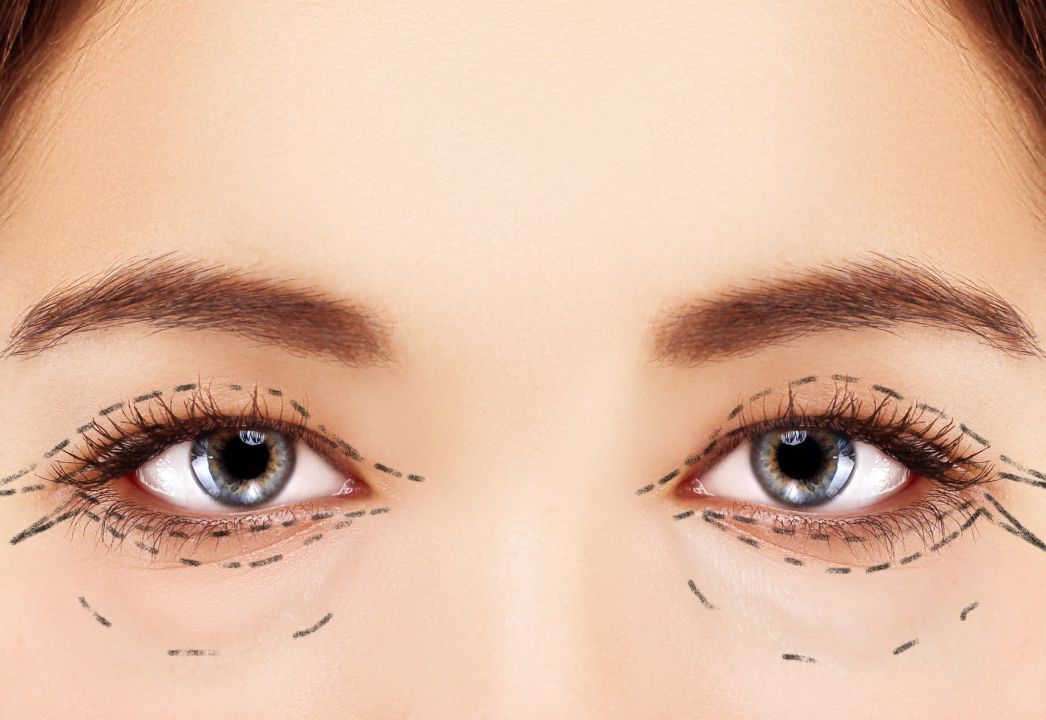
Upper and lower eyelid surgery, also known as blepharoplasty, is a cosmetic surgery procedure that aims to improve the appearance of the eyelids. The surgery involves removing excess skin and fat from the eyelids, resulting in a more youthful and refreshed appearance. In this article, we will discuss the procedure in detail and answer some common questions about it.
Upper and lower eyelid surgery is usually performed for cosmetic reasons, to remove excess skin and fat from the eyelids, and to improve the appearance of the eyes. However, in some cases, it can also be performed for medical reasons, to improve vision by removing excess skin that may be obstructing the vision.
Upper and lower eyelid surgery is usually performed under local anesthesia, with sedation or general anesthesia as options for patients who may be more anxious. The surgeon will make an incision along the natural crease of the upper eyelid, or just below the lash line for the lower eyelid. Through the incision, the surgeon will remove excess skin and fat, and if necessary, tighten the muscles around the eyes.
The incisions are then closed with fine sutures, and the area is covered with a bandage or ointment to prevent infection and promote healing.
After the surgery, patients may experience some bruising, swelling, and discomfort around the eyes. Cold compresses and pain medication can help alleviate these symptoms. It is also recommended that patients avoid strenuous activity for at least a week after the surgery, and avoid wearing contact lenses for two weeks.
Most patients can return to work and normal activities within one to two weeks, although full recovery can take several months.
As with any surgery, there are some risks and complications associated with upper and lower eyelid surgery. These include bleeding, infection, scarring, and temporary or permanent changes in vision.
It is important to choose a qualified and experienced surgeon to perform the procedure, and to follow all post-operative instructions carefully to minimize the risk of complications.
Good candidates for upper and lower eyelid surgery include individuals who are in good overall health, with no medical conditions that may interfere with the surgery or the healing process. They should also have realistic expectations for the results of the procedure.
It is important to consult with a qualified and experienced surgeon to determine if upper and lower eyelid surgery is right for you.
Upper and lower eyelid surgery can be an effective way to improve the appearance of the eyes and achieve a more youthful and refreshed look. The procedure is generally safe and effective, but it is important to choose a qualified and experienced surgeon and to follow all post-operative instructions carefully.
If you are considering upper and lower eyelid surgery, it is important to consult with a qualified and experienced surgeon to determine if the procedure is right for you.
Upper and lower eyelid surgery, also known as blepharoplasty, is a cosmetic surgery procedure that can provide significant improvements in the appearance of the eyes. However, as with any surgical procedure, there are certain issues that should be considered before undergoing the surgery. Here are some of the main issues that should be taken into account:
1-Potential Risks and Complications: As with any surgical procedure, there are certain risks and complications associated with upper and lower eyelid surgery. These can include bleeding, infection, scarring, and temporary or permanent changes in vision. It is important to discuss these risks with your surgeon and to understand the potential complications before undergoing the surgery.
2-Realistic Expectations: It is important to have realistic expectations for the results of the procedure. While upper and lower eyelid surgery can provide significant improvements in the appearance of the eyes, it is important to understand that the results may not be perfect or completely natural-looking. It is important to discuss your expectations with your surgeon and to understand what can realistically be achieved with the surgery.
3-Recovery Time: Upper and lower eyelid surgery usually requires a recovery period of at least one to two weeks, during which time patients may experience some discomfort, swelling, and bruising around the eyes. It is important to follow all post-operative instructions carefully to ensure proper healing and to avoid complications.
4-Cost: Upper and lower eyelid surgery can be expensive, and it is important to consider the cost of the procedure before deciding to undergo it. While the cost can vary depending on the surgeon and the location, it is important to factor in the cost of the surgery, as well as any additional costs such as anesthesia and follow-up appointments.
5-Choosing a Qualified Surgeon: It is important to choose a qualified and experienced surgeon to perform the procedure. Look for a surgeon who is board-certified and has extensive experience performing upper and lower eyelid surgery. You can also ask to see before-and-after photos of previous patients to get an idea of their skills and the results they can achieve.
In conclusion, while upper and lower eyelid surgery can provide significant improvements in the appearance of the eyes, it is important to carefully consider the potential risks and complications, have realistic expectations, and choose a qualified surgeon to perform the procedure. By taking these issues into account, you can make an informed decision about whether or not upper and lower eyelid surgery is right for you.